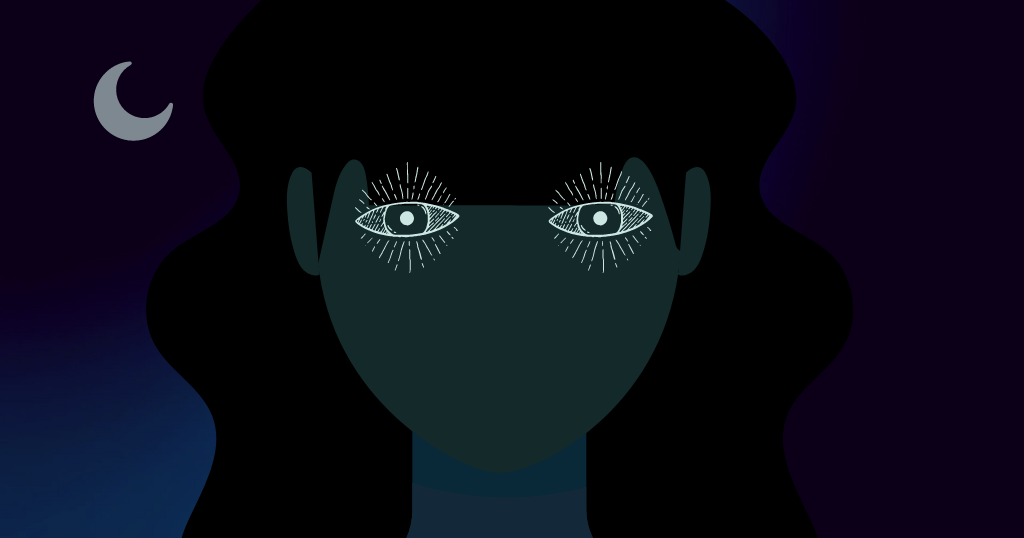(Updated April 2023.) I have conducted three self-experiments with melatonin supplements, none of them particularly helpful with my sleep, but highly intriguing nonetheless.
Experiment 1: slept round the clock
The first experiment was in my early thirties, back when I was sleeping three hours a night. The melatonin had no effect the day I took it, but the next afternoon I fell asleep for 24 hours. That experience kept me off the stuff for about 12 years.
Experiment 2: almost no results
The next attempt lasted longer and used a few different dosages. I followed the dosages listed on the labels, such as 1.5 mg, 3 mg, etc. I could feel it working and I got sleepier and sleepier and then . . . nothing.
At the time, I had similar results when using amber lightbulbs and amber glasses, which prevent blue light from turning off your melatonin production at night. Especially while reading, I’d get sleepy and doze-y for about 30 minutes and then snap wide awake again.
Experiment 3: hiccups, hypnopompia and hypnagogia
A few years later, I ran across some self-experimenters using up to 40 mg (milligrams) with apparently no ill effects. My megadosing heart leapt with joy. Over a couple of weeks I built up to 50 mg a night. Or, to be official, I “titrated up.” That turned out to have even less effect than the single-digit doses. I didn’t even get sleepy.
However, I did note with interest the following effects:
- I had 4 15-minute sessions of hiccups in 3 days.
- My menstrual period was extended by two weeks.
- I had two episodes of “waking dreams.”
That last effect was entertaining and introduced me to the concepts of hypnopompia, the transition state from sleep to wakefulness, and of hypnagogia, from wakefulness to sleep.
Early in the morning, while half awake, a series of images displayed in my head like a very fast slide show. Click, click, click. They were definitely not memories, but photo-realistic images of things like a space station in a nebula, or people I’d never seen before on a picnic, or machines that don’t exist.
I forced myself fully awake and discovered that by concentrating I could get the images to start again. The last one stood out clear as day — a sunset shot of a grand building, like a Carnegie library. A row of Model Ts or similar old cars was lined up on the street outside, which was built on the top of a small dam or a very steep embankment. I spent a couple of hours trying to find a similar photo online, but no luck.
Smaller, saner doses
Later I remembered a New Scientist or possibly a Discover article about researchers who pointed out that melatonin is only needed in wee little doses, 300 mcg (micrograms) or so, and that using more might be counterproductive. (Sorry, I cannot find the article.) Because melatonin is a hormone, not just your run-of-the-mill mineral or vitamin, experts tend to worry more about its use as a supplement. In parts of Europe it is available by prescription only.
Anyway, I dug out my melatonin bottle and bit off what I hoped was a third, which would be maybe 500 mcg. It seemed to give me a few hours more sleep that night, but I couldn’t repeat the results.
(This is an unreliable way to measure a dose, by the way. Supplement ingredients are not necessarily uniformly distributed throughout the pill or tablet.)
On to timed-release melatonin
I continued experimenting for several months with different doses of timed-release melatonin (TRM), with the following results. By “worked,” I mean that it produced a few more hours of sleep.
- More than 1.5 mg of TRM never worked. I only tried two different doses of non-timed release melatonin, with no effect.
- At first, in late October and early November, 1.5 mg TRM — and no other dose — gave me four more hours of sleep, but ONLY when I also spent 1.5 hours in daylight before 1:30 pm AND 1.5 hours in front of a light therapy lamp. If I skipped any of those steps, I would not get the effect.
- Eventually that stopped working, perhaps because morning daylight got less and less intense.
- Using doses larger than 1.5 mgs TRM made me feel anxious, panicky and depressed for an hour or so at night. Not fun. This matched personal accounts I’ve found of other experimenters who considered it a sign that the dose they had used was too high.
- If I tried taking more melatonin again after I woke up after several hours, timed release or otherwise, it wouldn’t do anything.
- At 7 am, after I used a bright light device for an hour, if I sat in the dark after the device turned off, I would get very sleepy and fall asleep for about 20 minutes (unusual for me). Turning on all the lights in the apartment stopped the effect.
- My period stopped for 45 days after I started experimenting with the lower dose melatonin. This has only happened one other time in my life. I was very happy.
- Doses of 2-7 mg seemed to give me headaches and mild cystic acne after a while. It is possible that the 1.5 mg doses did this, too, after several weeks of use.
At the end of this experiment, I concluded that my insomnia was related to light exposure, but I had no luck in my limited testing of that theory, until I moved to a latitude much further south.
Effects continued for a year
When this experiment ended, I had a short, vivid dream that ended with someone shooting me in the head with a shotgun. Weird, but very common in these situations, as are dreams or experiences of alien abduction, sleep paralysis, and a buzzing or exploding head.
These phenomena seem to happen when you futz with the pineal gland, aka the Third Eye. SSRIs are famous for this and melatonin does it as well. An acquaintance mentioned that she felt that with SSRIs at least, it seems to happen when titrating up or down, but not once you’ve stabilized at a constant dose, or no dose.
Super-compressed dream downloads
Dozing off while reading a book at night, in those 30 or so seconds when I was half asleep, I’d have a dream in which some factor of human existence was made clear to me with the force of revelation. I would then snap back awake.
Usually I could not remember the details. The ones I do remember explained such burning questions as:
- Why men in Louis XIV’s court at Versailles wore high heels: to protect their feet from sewage in the halls
- Why five years seems to be the limit for a good TV show: the writer buys a too-expensive new house and his anxiety about the mortgage erodes his creativity.
- Why the Maya disappeared: they got bored and wandered off.
As revelations go, it’s not exactly start-your-own-religious-following caliber, but I appreciated the distraction.
Physiological doses vs. pharmacological doses
These self-experiments were a lovely demonstration of the difference between a substance’s physiological doses, or the dose the body uses in normal operations, and pharmacological doses, the dose that creates a certain effect, and which are usually much larger.
If you’re interested in accounts of self-experimenters who’ve used melatonin and other common over-the-counter supplements for mind-altering as well as traditional purposes, visit the Experience Vault at Erowid.org. It’s under the Plants and Drugs section.
_______________
This content was first published in November 2012 and July 2013 and updated in April 2023.

Marjorie R.
Marjorie is the creator of AvoidingRx.com, a record of her and her guest authors’ experiences with non-prescription health solutions. She is a third-generation nutritional-therapy self-experimenter.





